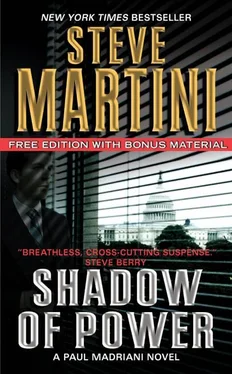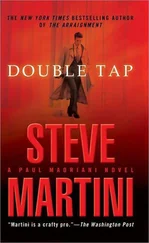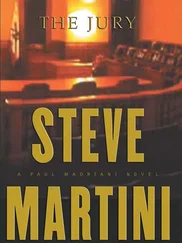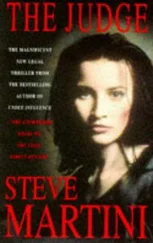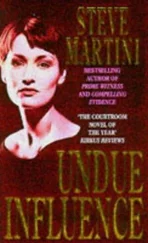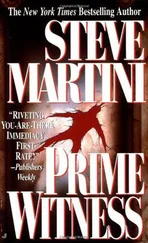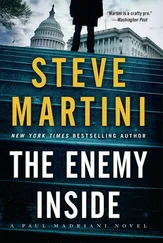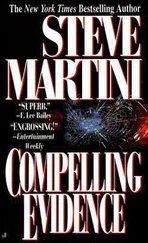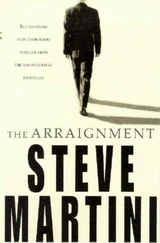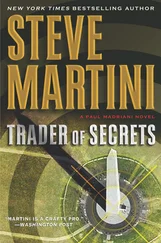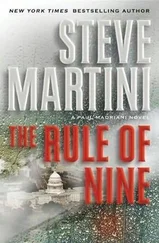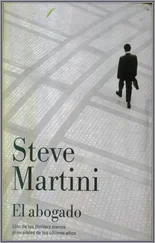“If I had to guess, I’d say that something was lying there covering that area when the blood spatter hit the portfolio.” Prichert just says it right out, matter-of-fact, no big point. He knows that to belabor what is now obvious is to be pounded with it.
“Do you have any idea what that item might have been?”
“No.”
“Then I assume you don’t have it?”
“Of course not.”
“Do you know whether the police have it?”
Prichert looks over at Detrick, who is now huddled with Tuchio at the counsel table. The detective gives him a quick shake of the head, then turns back to the prosecutor.
“I think you can be fairly certain that they don’t have it either.”
It’s the only available answer, because if the police have it, they haven’t turned it over to us in discovery.
“So it appears that the item is missing?” I say.
“It would appear so.”
“Earlier I believe you testified that from your examination of the attaché case, while there was evidence of the case having been opened and traces of blood inside, you couldn’t be sure whether anything was taken. Let me ask you now: After looking at the leather on that portfolio, do you think there’s a fairly good chance that whoever killed Terry Scarborough took something from that room?”
“In light of the physical evidence, I’d have to say yes, there’s a pretty good chance that they did.”
I am told that the phenomenon on the surface of the leather portfolio is sometimes called “a shadow.” It is similar to what often happens in structural fires where a book, a sheaf of paper, or some other object covers the surface of, say, a wooden table. If the table isn’t destroyed by the flames, its surface will be smoked or charred, except for areas covered by the object. There, the surface will present the precise outline of the item resting on it at the time of the fire.
The difference here is that we’re dealing not with flames but rather with the fine mist of blood cast across the room by the repeated blows of the hammer as Scarborough was beaten to death.
Harry and I have measured the rectangular shadow on the leather portfolio. The only edges that are sharply defined are the bottom-the edge closest to Scarborough’s chair, the edge that caught Harry’s eye-and the shorter right edge of the rectangle. Because of the angled trajectory of the blood, the other two edges were provided a kind of small defilade by the object resting on top of the portfolio, so that the shadow in these areas is less sharply defined. Along the bottom, the sharper and more defined edge, if you look closely, you can see a slight smear of blood. This was probably made when the killer lifted the item from the leather.
Still, when we measure the rectangle, Harry and I come to the same conclusion. The shadow on the leather matches the size of an ordinary business envelope, or perhaps letter-size sheets of paper folded in thirds, in the manner of a letter, the contents you might stuff into a business envelope. To say that this has inspired us is an understatement.
From everything we know, the information from Richard Bonguard, Scarborough’s literary agent, and Trisha Scott, the former Supreme Court clerk who lived with the victim, Scarborough possessed only a copy of the Jefferson Letter. While the original was probably larger, it is likely that a facsimile made on a modern photocopy machine might well have been reduced down to a more convenient size, eight and a half by eleven inches, modern letter-size paper, the size of the rectangle on Scarborough’s leather portfolio.
We are done for the day, finished in court. Harry and I are milling around in the office after hours, collecting our messages and trying to get a grip on what may happen tomorrow. Harry comes into my office.
“News from Herman,” he says. Herman is back in D.C. trying to chase down or get a lead on the whereabouts of Arthur Ginnis.
Harry is holding a telephone slip stapled to a page of typed notes, information I assume Herman dictated over the phone to one of the secretaries while we were in court.
“Has he found Ginnis?”
“No. Not yet.” Harry is reading as he settles into one of the two client chairs on the other side of my desk. He looks at the telephone slip. “It came in just after noon,” he says. “He has gotten the information from the investigators we hired back there, though.
“Interesting stuff,” says Harry, “but no surprises. What I expected. Aranda, full name Alberto Aranda, age thirty-two, Yale Law grad. It doesn’t say here, but I’m guessing Mr. Aranda would be at or near the top of his class,” says Harry.
“Why?”
“Because he was selected last year to become a Supreme Court clerk by Associate Justice Arthur Ginnis.” Harry looks up from the paper. “I told you so.”
What Harry means is that the e-mail from the Court to Scarborough telling him to take his inquiries away from the Court’s official e-mail domain to a numbered snail-mail box was not dealt out by some obscure tech guarding the Court’s electronic access points.
“The mailbox, the box number sent to Scarborough in the e-mail for the pursuit of private business. What we thought,” says Harry. “An address of convenience. Says here it’s one of those private parcel-and-post places that small businesses use. The box number is registered-oh, this is interesting,” says Harry, “-to ‘A. Aranda.’” He looks up again.
“So it’s not registered in Ginnis’s name?” I say.
Harry shakes his head. “Get the sense we’re dealing with a very careful man here? Now here’s something else.”
“What’s that?”
“One of the investigators Herman hired was able to glance into the postal box through the little glass window in the front. He told Herman it looked like there were a couple of items inside, but he could only read the one on top. It was addressed to Aranda.”
“Well, he owns the box,” I say. “I think we need to talk to Mr. Aranda.”
“It had a funny stamp on it.”
“What had a funny stamp on it?”
“The item in the postal box the investigator was reading,” says Harry. “According to the note, the stamp was something foreign, overseas. He couldn’t make out the entire return address, but he said the street name was very long and appeared to be more than one word. The investigator told Herman that it looked like the address was written in German.”
We regard each other with quizzical expressions.
Harry reads on. “The street named ended in the word ‘straat.’ But the man did get the country-‘Curaçao.’ Where the hell is Curaçao?” says Harry.
As he’s saying the word, I am already turning in my chair to the computer behind me. I do a Google search on the name. Harry spells it out. What pops up at the top of the screen are three small thumbnail photos, pictures of two small maps on the right and the left, what looks like the shape of the same island in each. In the center is a picture of a sugar-white sand beach lapped by azure waters, a woman in a bikini lying with her lover at the ocean’s edge.
I can see enough on the site lines below the pictures to pick out the word “Caribbean.” I tell Harry.
“Trisha Scott told me that according to the Court staff she talked to, Ginnis was down in the Caribbean.”
By now Harry is out of the chair, leaning over my shoulder looking at the center thumbnail photo, the picture of the beach and the bikini. “Yeah. Recovering from surgery, as I recall,” he says.
I open the first site on the page and try to read. It’s in Spanish. I try the second site, Wikipedia.
A few lines in, I have one answer. “That explains the street address,” I say.
“What does?” asks Harry.
Читать дальше
